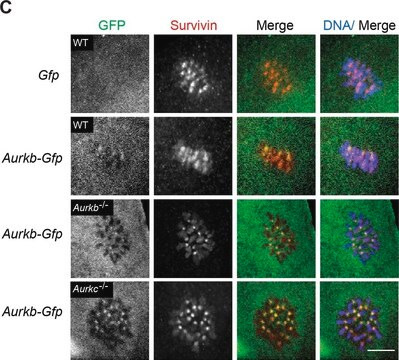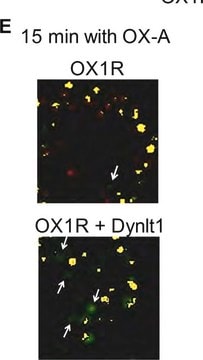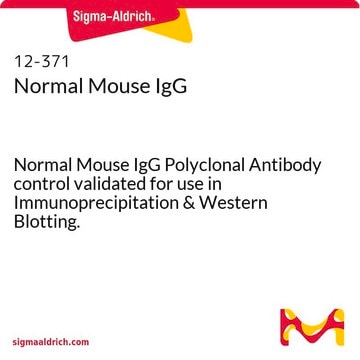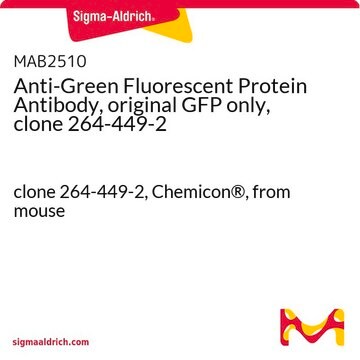SAB4200681
Anti-Green Fluorescent Protein (GFP) antibody, Mouse monoclonal
clone GFP-20, purified from hybridoma cell culture
Synonyma:
Monoclonal Anti-Green Fluorescent Protein (GFP) antibody produced in mouse, green fluorescent protein
About This Item
Doporučené produkty
biological source
mouse
Quality Level
antibody form
purified antibody
antibody product type
primary antibodies
clone
GFP-20, monoclonal
form
buffered aqueous solution
mol wt
antigen 27 kDa
species reactivity
rat, human
concentration
~1 mg/mL
technique(s)
immunoblotting: 1-2 μg/mL using whole extract of human HEK-293T cells over-expressing GFP tagged fusion protein.
immunoprecipitation (IP): 5-10 μg using whole extract of human HEK-293T cells over-expressing GFP tagged fusion protein.
isotype
IgG1
shipped in
dry ice
storage temp.
−20°C
target post-translational modification
unmodified
General description
Specificity
Immunogen
Application
- immunoblotting
- immunoprecipitation
- dot blot
- enzyme-linked immunosorbent assay (ELISA)
- scanning electron microscope (SEM)
Biochem/physiol Actions
Physical form
Storage and Stability
Disclaimer
Ještě jste nenalezli správný produkt?
Vyzkoušejte náš produkt Nástroj pro výběr produktů.
recommended
Storage Class
10 - Combustible liquids
flash_point_f
Not applicable
flash_point_c
Not applicable
Vyberte jednu z posledních verzí:
Osvědčení o analýze (COA)
Nevidíte správnou verzi?
Potřebujete-li konkrétní verzi, můžete vyhledat daný certifikát podle čísla dávky nebo čísla šarže.
Již tento produkt vlastníte?
Dokumenty související s produkty, které jste v minulosti zakoupili, byly za účelem usnadnění shromážděny ve vaší Knihovně dokumentů.
Zákazníci si také prohlíželi
Náš tým vědeckých pracovníků má zkušenosti ve všech oblastech výzkumu, včetně přírodních věd, materiálových věd, chemické syntézy, chromatografie, analytiky a mnoha dalších..
Obraťte se na technický servis.












